Remote desktop is the new normal thanks to modern technology that connects people to their workplace to share files and applications. But the technology can be confusing for most users who have no technical background. That is why I’m going to explain things in simple terms.
- What are VDI and RDS?
- What are they used for?
- What is the difference between them?
- Which one is better for my use?
In this article, I’ll compare VDI vs. RDP vs. RDS technologies and explain what they are, why they are used, and their similarities and differences, so you have a clear understanding to choose what is suitable for you.
Reading the following article is highly recommended to users who are looking to work through their computer(s) distantly with remote desktop technologies. So, please stay tuned with us to compare and contrast VDI vs. RDP vs. RDS. Firstly, let’s see what VDI and RDS, and RDP are.
What is VDI?
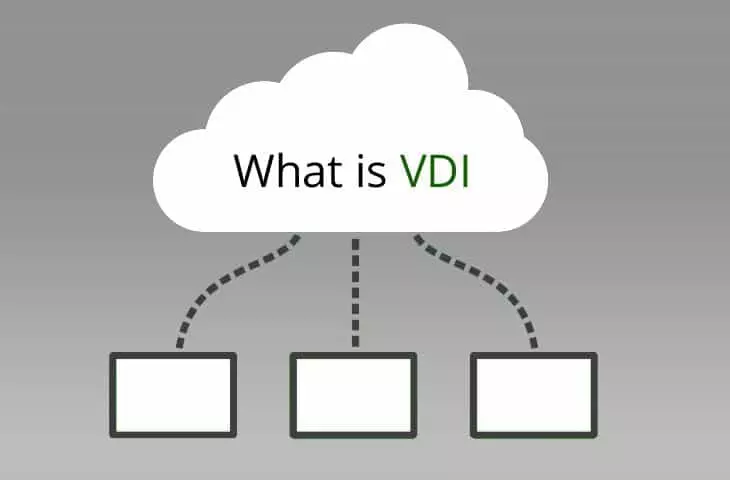
It stands for Virtual Desktop Infrastructure that dedicates a virtual machine (VM) to each user. The VM is running on an OS hosted on a data center, either on-premise or on a cloud service such as Azure. Each user has a dedicated desktop that is fully isolated from other users. The isolation provides full administration rights to run applications without the risk of malware spreading in the network. Resources such as CPU, memory, and disc space can also be allocated according to the user’s need. for detailed information, you can read my guide about the best server processors . The VMs are managed by a remote desktop connection broker that links each user’s session to their VM. Also, I recommend another blog to learn the difference between virtual machines and desktop infrastructure.
VDI vs. remote desktop has the advantage of segregating confidential data that increasing security. But it has a complex setup that requires IT professionals for deployment and maintenance.
VDI is a combination of hardware, software, and network configuration that allows virtual desktops and virtual servers to be distributed to end-user computers. They can reach their virtual machine from anywhere on the network.

What is RDP?
RDP stands for Remote Desktop Protocol, which is developed by Microsoft as a network communication protocol. RDP is the base on which RDS and VDI run and function. It transmits commands and GUI between the server and the client. If you are looking for a precise answer to “What is RDP?“, we have published a comprehensive guide on the topic that we highly recommend you read.
The greatest strength of RDP is its compatibility with VPS hosting servers that can deliver reliable and customizable hosting. You can choose between shared RDP accounts and Admin RDP servers, but we highly recommend Admin RDP servers. For example, here at Cloudzy, we offer a special RDP VPS. You can get an RDP server (VPS) that has RDP pre-activated. We also give full admin access that allows you to customize your VPS as you wish. Doing all this, you’ll get your RDP server instantly and can start using it as soon as you are done with purchase. To top these great features with a fresh cherry on top, our RDP server has competitive prices, starting at only $9.95.
 Need a Remote Desktop?
Need a Remote Desktop?
Reliable, high-performance RDP servers with 99.95 uptime. Take your desktop on the go to all the major cities in the US, Europe, and Asia.
Get an RDP ServerWhat is RDS?
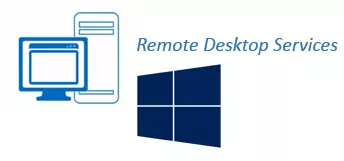
RDS stands for Remote Desktop Services, which is a feature of Microsoft Windows Server. It enables users to remotely connect to Windows desktop through a graphic interface. The user installs the RDS client, and the server runs Windows Server OS. RDS was called “terminal services” before 2008.
The advantage of Microsoft RDS is lower licensing costs since there is only one installation. The security is also high, and deployment and maintenance are simple that require no technical background. However, the connection is made through shared VMs, which can be considered a breach of data regulations in certain countries.
How Does RDS Work?
The client device needs the RDS client, and the RDS server needs the Windows Server operating system to connect remotely to one or more terminal servers. (Previously, RDS was called Terminal Server). All operations take place server-side, not on a user machine.
Many people ask, “What is the difference between RDP and RDS?”
To tell the truth, there is no difference. In fact, the famous RDP (Remote Desktop Protocol) is a distinguished type of Remote Desktop Service which has noticeable popularity among users because of its excellent functionality. We will briefly touch on Remote Desktop Protocol in the following sections.
VDI vs. RDP vs. RDS: Similarities
Their similarity is really about the user experience as they log in to a remote desktop and use resources that are hosted on a server. The user’s local machine is free from data load or security risks.
It doesn’t matter which protocol is your champion in VDI vs. RDP vs RDS; they all make remote connections possible so employees can work from home and yet have access to corporate data hosted on the servers. They provide a desktop that feels like the local desktop users could have had on their own devices. Their performance is pretty much similar as far as the user is concerned in terms of speed and latency.
VDI vs Remote Desktop might be a topic of discussion for tech beginners, but you need to know that the user experience of both is basically identical. The main thing to consider when there’s talk of VDI vs Remote Desktop is that Remote Desktop is limited to a single Windows server, but VDI can handle the load of multiple operating systems and applications.
Also, suppose you run an organization and are tackling the VDI vs Remote Desktop dilemma. In that case, you should know that with Remote Desktop, your employees (tech beginner or not) can access the same applications and resources smoothly. For your developers that handle complex configurations and deployments, VDI is the better option.
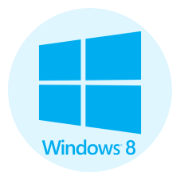 Free Windows 8
Free Windows 8
If you need Windows 8 to run special software or an efficient remote desktop, Cloudzy Windows 8 VPS is for you.
Get Windows 8 VPSVDI vs. RDP vs. RDS: Full Comparison & Winner🥇
The difference between VDI vs. RDP vs. RDS comes down to technological setup. VDI is based on Windows clients just like RDP, but RDS is built on Windows Server.
VDI is considered the modern method of remote desktop connection where users have individualized desktop with full customization features, whereas RDS is considered an older method that utilizes a server full of resources that are managed by an admin and shared between users. RDP, however, is the underlying protocol that enables remote connection in any system.
To know the comprehensive list of differences, we need to get into details:
-
OS compatibility
VDI has the flexibility of operating systems, and each user can have their OS, including iOS, Mac, or even Android. RDP is also well compatible with Mac OSX, iOS, and android, but RDS is limited to the Windows server.
✅So, in terms of OS flexibility in VDI vs. RDP, both systems perform well.
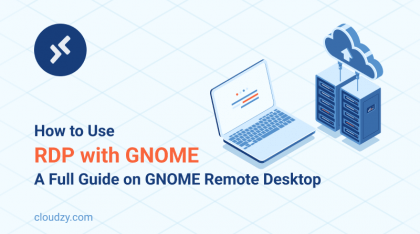
-
Number of servers
VDI utilizes servers as much as the number of users demands, but RDP and RDS are often deployed on a single server that serves many users.
✅So, RDP has the upper hand in terms of the number of servers when it comes to VDI vs. RDP.
-
Scalability
VDI has hardware limitations that don’t allow connections to exceed a certain number, whereas RDP and RDS seem limitless.
✅So, RDP is more scalable than VDI in the battle of VDI vs. RDP.
-
Ease of administration
VDI is a complex system, and technical knowledge is needed to manage the system. Whereas RDP and RDS have a simple step-by-step configuration that even users without technical knowledge can set up. However, in multi-user environments, the setup might get tricky, which can easily be troubleshot with massive online resources.
✅So, RDP is easier in terms of administration in VDI vs. RDP.
-
Resource allocation
VDI offers a better resource allocation system where the user who needs the most receives the most. But RDP and RDS are bound to a unified allocation system where resources are divided almost equally to users regardless of their role in the network.
✅So, VDI offers a smarter resource allocation system in the competition of VDI vs. RDP.
-
Device flexibility
VDI has the “Bring Your own Device (BYoD)” feature, which lets you choose your device (phone, tablet, laptop, or pc). RDP is also offered on mobile devices, but RDS is limited to PC since it runs on Windows Server.
✅So, both applications offer device flexibility to users of VDI vs. RDP.
-
Desktop customization
VDI has two kinds of desktops, namely persistent and non-persistent, which are different in the personalization feature. Persistent type allows the user to have custom OS and applications, whereas non-persistent type assigns a random desktop from a pool.
RDP and RDS, on the other hand, don’t offer this feature to users, and they are all set to use an assigned desktop with preloaded generic applications. The desktop is based on a shared VM that is session-based meaning it is disposable after the session ends.
✅So, VDI has the upper hand in terms of desktop customization in VDI vs. RDP.
-
Internet connectivity
VDI has sync capability that allows users to work offline and only sync data when they are back online, whereas RDP and RDS require an always-on internet connection; otherwise, users can’t connect and work.
✅So, VDI offers a better choice in terms of internet connectivity that seems in favor of users of VDI vs. RDP.
-
Overall cost
VDI offers a virtual instance to each user with individualized applications and data. This will require subscriptions and licensing that can easily add up according to the number of users. Hardware and administration costs are also considerable.
On the other hand, RDP is free of charge because it has been a feature of Windows since XP. It only needs to be enabled in the Windows setting.
RDS requires one instance of Windows server installed on a single server, and all users log into the same server through RDP. The number of users is only limited to the power of underlying hardware. However, a Client Access License (CAL) will be needed if the server is located on the premise, or an Azure subscription is required if the server is on the clouds.
✅So, RDP is the most economical option in VDI vs. RDP.
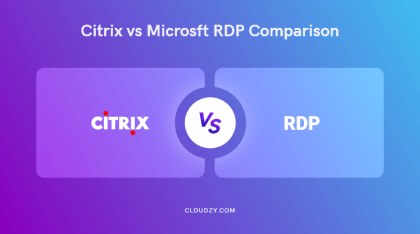
VDI vs. RDP: What Are Their Main Use Cases?
Lastly, yet most importantly, in this section, we will discuss VDI and RDP use cases so you can choose one that suits you best:
-
Main uses of VDI
By using VDI, all users have a dedicated platform that they can modify. The administrator can determine policies to decide what can be changed and what is common among various virtual systems. With VDI, users would have a more familiar Microsoft Windows 10 environment.
-
The main uses of RDP
In general, RDP is best suited for organizations with multiple users needing the same number of apps, services, and resources. RDP is simpler to implement and manage than VDI, though lacking a bit in customization. Multiple users sharing server resources minimizes capacity and overhead expenses but contributes to application problems.
Final Note:
VDI is a safer choice for more complex implementations of multiple user forms and provides virtual desktops and software independently to prevent compatibility problems. However, attention must be given to the high cost and difficulty of VDI’s implementation and maintenance.
VDI vs. RDP: Which is right for you?
The honest answer is that it depends on your organizational needs and budget. However, RDP should be your base choice since it is free and is needed for all remote desktop systems.
And suppose you have a significant number of users that use generic applications and need the same computing power. In that case, it is a good idea to invest in RDS since the overall cost of licensing, resources, and administration will be lower.
But if you have different types of users who each use specific applications with different computing resources, then VDI might be a better choice. It provides the users with what they need in terms of resources and customization.
For most users, however, RDP is more than enough to answer their demands for a reliable and fast remote desktop experience. When you buy RDP Server with NVMe storage, DDR4 RAMs, and 1 Gbps bandwidth, your remote desktop server will be able to run any software without lagging or crashing. Plus, our 99.95% uptime means you’ll never be without your remote desktop, regardless of where you are.
FAQ
Are VDI, RDP, and RDS the same?
No, they’re not. VDI stands for Virtual Desktop Infrastructure, RDP stands for Remote Desktop Protocol, and RDS stands for Remote Desktop Services. They are all remote desktop protocols, but each functions differently and has unique features, which are all discussed in this article.
Is VDI better than RDP?
It depends on what you need from your remote desktop. VDI is an enterprise solution for large corporations. However, that doesn’t mean RDP cannot be used for organizational purposes. You can invest in a Cloudzy RDP server which performs at an optimal level for both individual and enterprise use. No latency or speed issues, and with our AI-powered detection tools, you will never be a victim of DDoS attacks.
VDI vs Remote Desktop; which is right for me?
Technically speaking, VDI vs Remote Desktop have the same root functionality but are built for different scales. For instance, in an organization where hundreds of employees need to access the same resources daily, Remote Desktop is the optimal solution. But for developers (your tech-savvy employees) who handle complex configurations, VDI is the way to go.

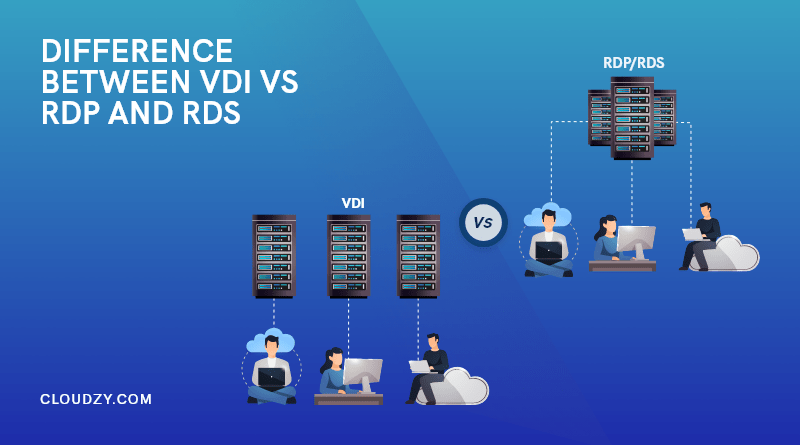
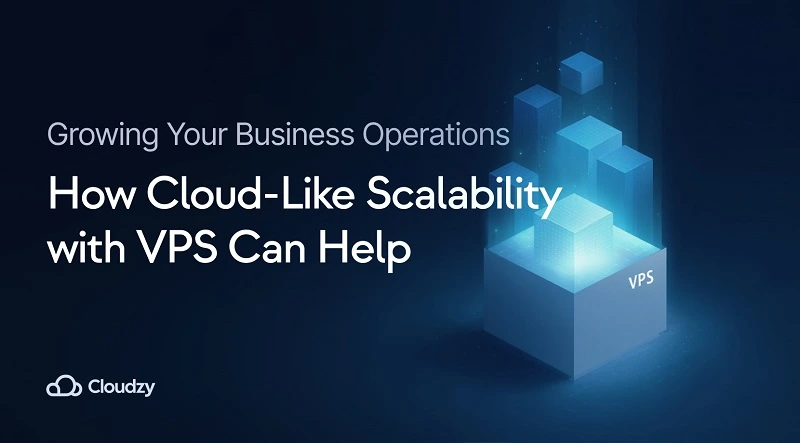


One Response
So, based on what you sayin we shouldn’t put rds vs rdp and instead of that compare vdi vs rdp. Interesting. Thanks.